Our editors independently select these products. Making a purchase through our links may earn Well+Good a commission
Annual vs. Perennial Plants: Here’s Why Both Deserve a Spot in Your Garden
Unsure about whether to plant annual vs. perennial plants? Learn the differences between the two, with ideas of what to grow in the garden.
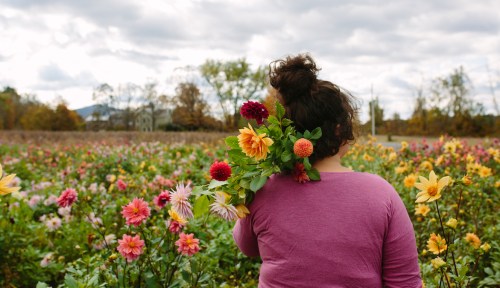
As much as we love our indoor house plants, now that the weather is warming up and flowers are popping up everywhere we look, we can’t help but get excited about the many blooms in view. Though, it undeniably brings up the age-old debate: annual vs. perennial plants. What’s the difference and how to do you plant and care for both?
Experts in This Article
If you’re at a loss, you’re not alone. Many people aren’t aware of the definitions, let alone the differences, between annuals and perennials. In short, it all comes down to flowers that come back every year and, well, those that don’t.
“The biggest difference between annual and perennial plants is that annual plants live for one growing season, while perennial plants regrow for multiple seasons,” says Rebecca Sears, CMO and resident green thumb at Ferry-Morse.
While your first instinct may be to assume that plants that return year after year are the clear choice, gardening experts actually recommend a combination of the two for the most stunning garden.
“Both annuals and perennials deserve a spot in your garden,” says PlantIn resident botanist Lotte Berendsen. “Especially with so many beautiful plants to grow, you don’t want to miss out on either variety.”
Speaking of varieties, below you’ll find 23 beginner-friendly annual and perennial flowers to incorporate into your garden.
Annual flowers
Annual flowers are known for their bright colors and quick blooms. “Annuals are often beautiful, showy flowers that grow from bulbs or seeds,” Berendsen says. “They bloom during the [spring and] summer, then die in winter, and must be replaced yearly.”
The upside of growing annuals is that they give you the opportunity to explore different color palettes and varieties. “Growing annuals can also allow gardeners to temporarily fill bare spots within their garden without committing long term,” Sears says. The downside of annual flowers is that they can require a bit more work at the start of each season. “But their quickness to bloom and ability to continue blooming for extended periods of time make the extra watering and maintenance worth it,” she says.
Looking to add some to your garden? Consider the easy-to-grow varieties—recommended directly by our gardening experts—below.
Calibrachoa
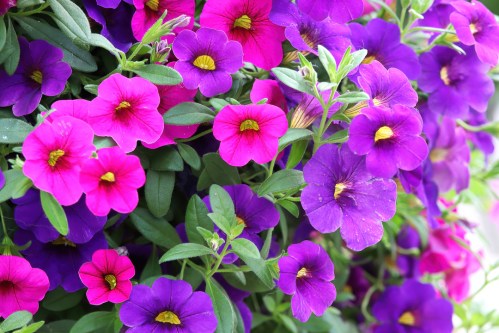
“If you want to add hanging baskets to your garden, calibrachoa trail beautifully, offering vibrant flowers that bloom from late spring to early frost,” Sears says. “These flowers grow best in full sun and moist soil, so be sure to water them once the top inch of soil feels dry.”
Canna lilies
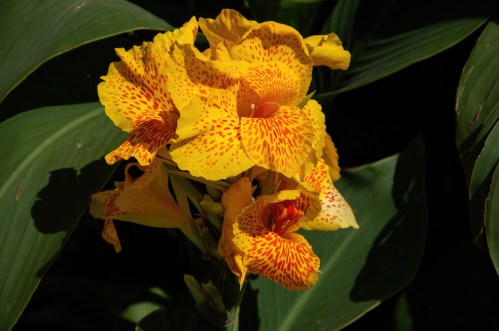
“Canna lilies are stunning flowers that can be grown annually anywhere in the world,” Berendsen says. “They must be kept moist during their growing season from summer to fall and enjoy frequent fertilization.”
Celosias

“These unique, feathery blooms will bring color and texture into any garden,” Berendsen says. “They come in many colors, making finding a bloom that matches your garden plan easy. Like most flowers, celosias enjoy full sun and frequent watering.”
Cosmos
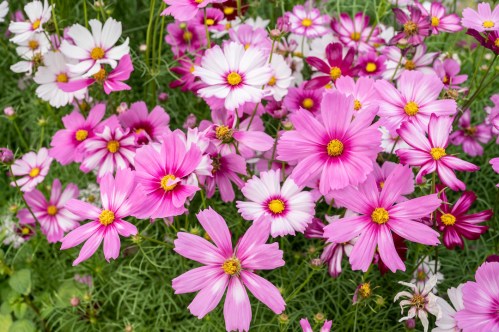
“Cosmos is a plant that produces bountiful blooms perfect for cutting,” Sears says. “The frilly leaves create a casual, cottage-garden look. Once established, you will not need to water your cosmos plants unless there is a prolonged drought, or they are grown in containers.”
Lobelias
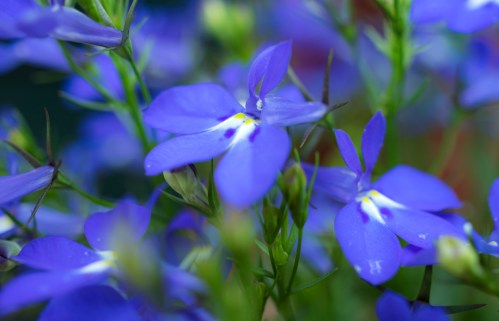
“If you have garden beds that require some color, and blue happens to be your favorite color, consider adding lobelias,” Berendsen says. “They can grow anywhere from full sun to partial shade and require moist soil as most plants do.”
Marigold
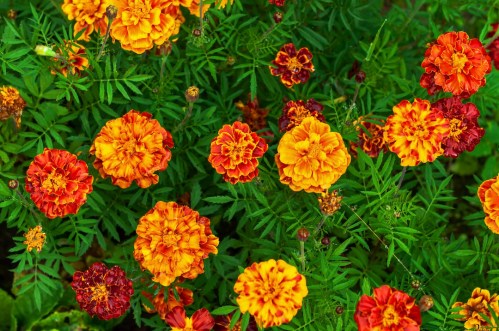
“Great for edging, window boxes, or containers, marigolds thrive in partial shade and only require watering once per week, or slightly more often when temperatures are higher in the summer months,” Sears says.
Nasturtium
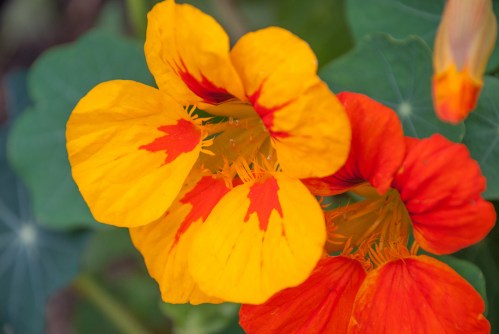
“These fragrant flowers blossom in a beautiful variety of colors, growing best when watered sparingly with access to full sunlight,” Sears says.
Petunias
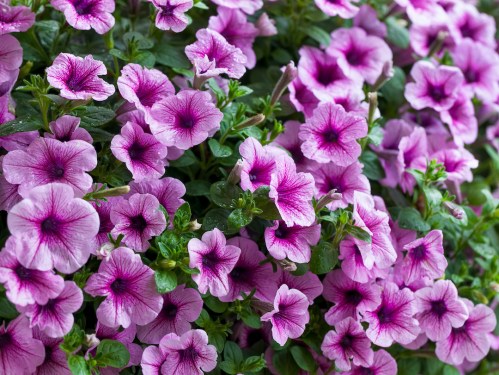
“Petunias provide vividly-colored blooms throughout the gardening season,” Sears says. “They’re available in an array of colors and trailing habits. They love full sun but are otherwise undemanding.” For best results, she says to water thoroughly once a week.
Poppies
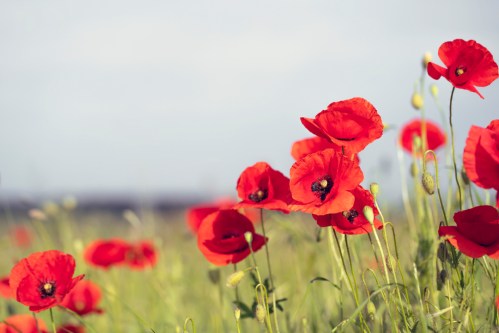
“These funky, red blooms thrive in well-drained soil and don’t need to be watered much,” Berendsen says. “Once a week during the growing season will do the trick.” Pro tip: “To get the most out of your poppies, deadhead them after blooming,” Berendsen says. “This way, they will produce new blooms, and you can enjoy them for longer.”
Sunflowers

“Perfect for tall, blooming backyards and screens for unsightly places, sunflowers require about an inch of water per week, as well as six to eight hours of direct sunlight per day, but are a beautiful, classic addition to any garden,” Sears says.
Zinnia
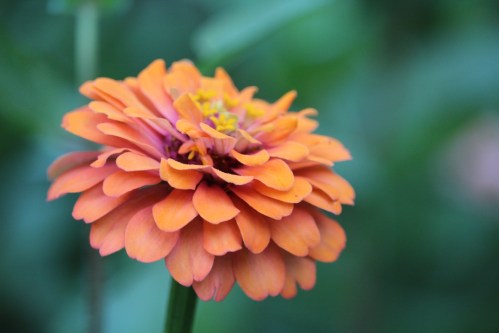
“Zinnias are bright, vibrant flowers that are perfect when cut for bouquets,” Sears says. “They require full sunlight and moist soil to grow their best, making it essential to water deeply a few times a week.”
Perennial flowers
While annuals have a short lifespan, perennials come back every year, typically for 10 to 20 years. “Many gardeners look at perennial flowers as a great investment, as they return year after year and offer additional benefits such as creating welcoming habitats for local pollinators,” Sears says.
In addition to blooming for years to come, perennial herbs and flowers are also very easy to care for. “Once they’re planted, they will continue to grow with limited maintenance for multiple seasons,” Sears says. “Though that’s not to say that perennials require no care, as the occasional pruning can go a long way to encourage new growth and lead to fuller plants.”
Where annuals can be grown all over the country and world, Berendsen says that perennials require being planted in a climate where they can thrive. “When choosing perennials for your garden, ensure your plants can grow in your USDA Hardiness Zone, otherwise, they will inevitably freeze to death,” she says.
There are two downsides of perennials. For starters, depending on the flower, the blooms can last anywhere from just two to three weeks (so significantly shorter than even annuals) for up to three months. While three months of color is great, it’s a bummer when blooms are super short-lived. What’s more, since perennials don’t die at frost, they require care during winter in order to look their best come spring. “They usually need additional pruning, winter protection care, and pest prevention, which is something to keep in mind,” Berendsen says.
Ready to fill your garden with never-ending blooms? Berendsen and Sears share their top picks, below.
Beebalm (Monarda didyma)
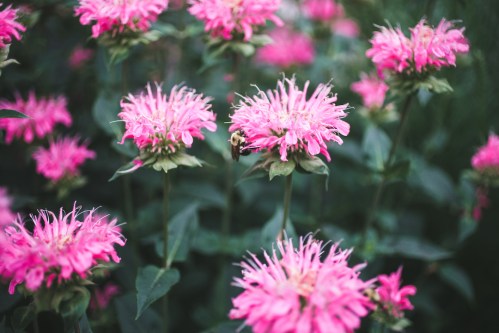
“Beebalm is a beautiful plant to add to a wildland garden or flower bed,” Berendsen says. “What I particularly love about this plant is that it, as its name suggests, attracts pollinators like bees, but also hummingbirds and butterflies.” Just keep in mind that it blooms best in perpetually wet soil. “So make sure to keep it watered throughout the dry, hot summer months,” she says.
Butterfly weed
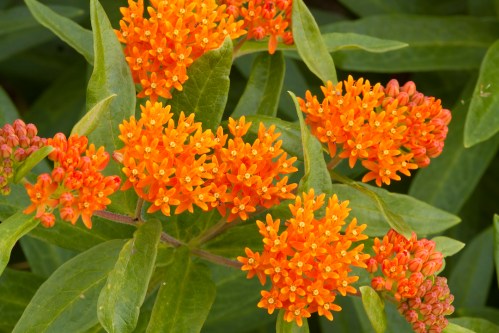
“Attract beautiful butterflies to your garden with these perennials,” Sears says. “Although the plant requires full sunlight, low soil moisture is needed for them to thrive, meaning you won’t need to water them frequently.”
Carnation
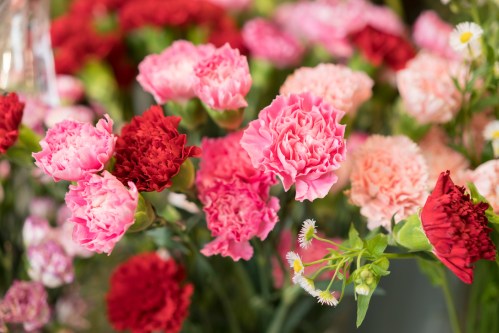
“These drought-tolerant flowers only require watering once per week and six hours of sun per day, making them easy to care for while still delivering beautiful, vibrant blooms,” Sears says.
Columbine

“These perennials require little care, preferring cooler weather and full sun, but once established these plants only require watering about once a week,” Sears says.
Coneflower
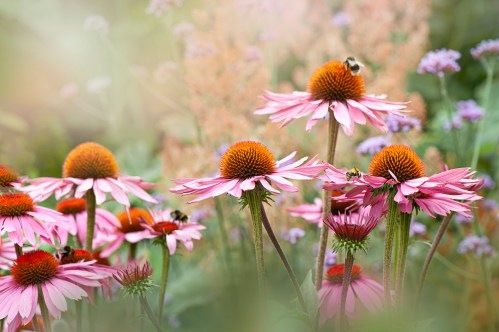
According to Sears, coneflowers are the hardiest perennial flower. “They are extremely hardy perennials, as they’re tolerant of heat, humidity, drought, and poor soil,” she says. “They will continue to bloom each year without too much maintenance and are valued for their ability to attract pollinators, bringing butterflies, bees and birds into the garden while also adding a pop of color to brighten up a space.”
Daylily
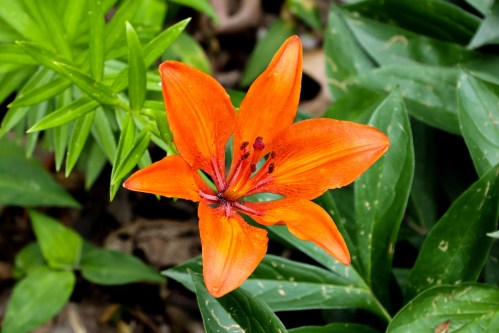
“If you live in zones three up to nine, the daylily will thrive in your garden,” Berendsen says. “Like any other flower, the daylily enjoys direct sunlight. Aim for six or more hours daily and keep the soil slightly moist throughout spring and summer.”
Foxglove
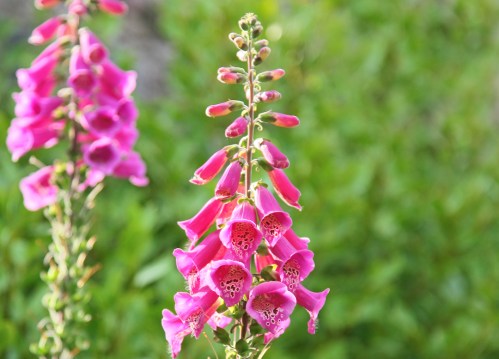
“Foxgloves thrive in full sun or partial shade and require an inch of water per week,” Sears says. “It’s important to remember that these perennials are toxic if eaten and are best used for backgrounds or woodland plantings.”
Hens and chicks
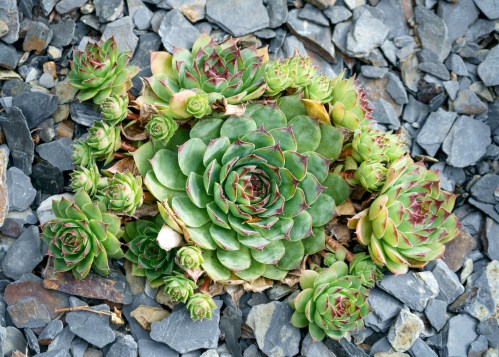
“If you have a rock garden and live in USDA zones three to nine, you should not miss out on this adorable flowering perennial,” Berendsen says. “They must be in well-drained, sandy soil and are drought-tolerant, making them an excellent plant for forgetful gardeners.”
Hollyhock
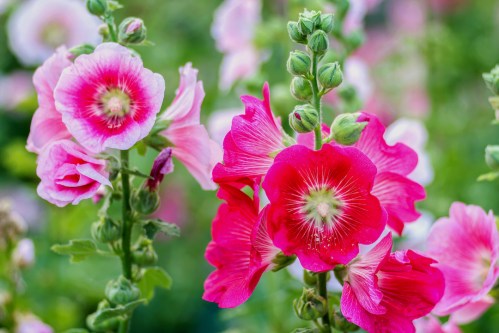
“Hollyhocks are biennials that self-sow prolifically, behaving like perennials in the garden,” Sears says. “They grow from 5 to 9 feet tall, making them ideal for a flower bed backdrop. They produce beautiful spikes of flowers loved by pollinators; cut them back for a second bloom in-season.” Pro gardening tip: Don’t confuse biennials with biannuals! Where biennials take two years to complete their bloom cycle, biannuals bloom twice per year.
Pasque flower
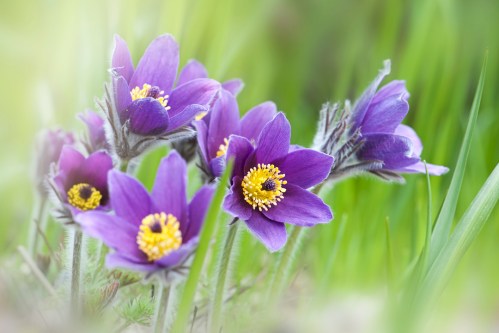
“Look no further if you are looking for a plant that gives you tons of blooms,” Berendsen says. “The pasque flower can produce up to 30 blossoms during its growing season.” For best results, she says to plant this flower in nutrient-rich, well-drained soil, making sure to keep it moist. “It also enjoys a sunny spot,” she adds.
Rex begonia
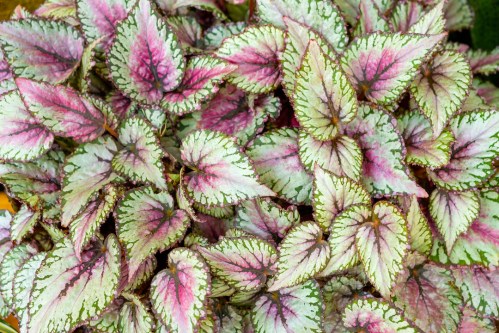
Rex begonias might be popular houseplants but they can also grow in gardens in USDA zones seven to 12, Berendsen says. “This plant has uniquely-colored and -shaped leaves and puts out adorable little flowers during the summer months,” she adds.
Just remember: They like regular watering and to be grown in shady areas. “They make a tremendous semi-shade plant for around your garden seating area,” Berendsen says.
Shasta daisy

“A classic flower for any garden, shasta daisies feature glistening white petals and buttery-yellow centers that will return year after year,” Sears says. “They will need regular watering when planted, but once established they only need to be watered when temperatures are high and if your area is getting less than one inch of rainfall per week.” Just make sure to plant them in bright spots, as Seara says they require full sun to thrive.
When to plant annuals and perennials
Now that you’re brushed up on the pros and cons of annuals vs. perennials—and now that you have tons of gorgeous flowers and plants top of mind—you might want to make a beeline to your local garden center. Before doing so, there are a few things you’ll want to know.
While annuals can be planted as seeds in early spring and grow into bloom in less than three months, most people reach for pre-planted flowers that they can then transplant into the pot or garden bed of their choosing. It’s easier and tends to offer instant gratification. That said, growing flowers from seeds can be quite satisfying.
Regardless of how you choose to plant and grow your annuals and perennials, the most important thing you’ll want to keep in mind is your frost dates. For annuals, wait for the last frost to pass before planting seeds or transplanting plants in spring; for perennials, plant mature plants at least six to eight weeks before the fall frost date to ensure they’re rooted by the time temperatures significantly drop, and plant seeds in spring after the last frost. If you ignore these rules, your seeds and plants will freeze and potentially die, rendering your planting efforts useless.
The takeaway
The annual vs. perennial debate all comes down to the type of garden maintenance you want to achieve as well the overall appearance of your outdoor space. Generally speaking, a variety of both annuals and perennials will make for the most diverse, picture-perfect garden.
Sign Up for Our Daily Newsletter
Get all the latest in wellness, trends, food, fitness, beauty, and more delivered right to your inbox.
Got it, you've been added to our email list.








